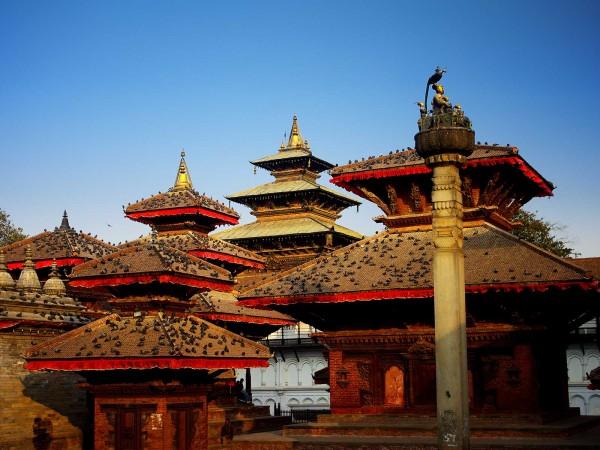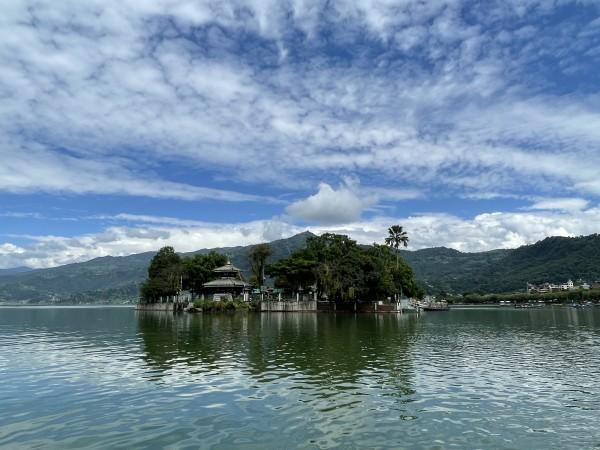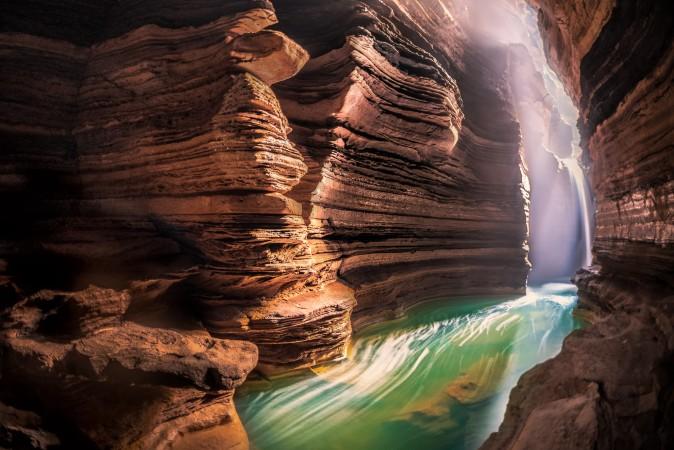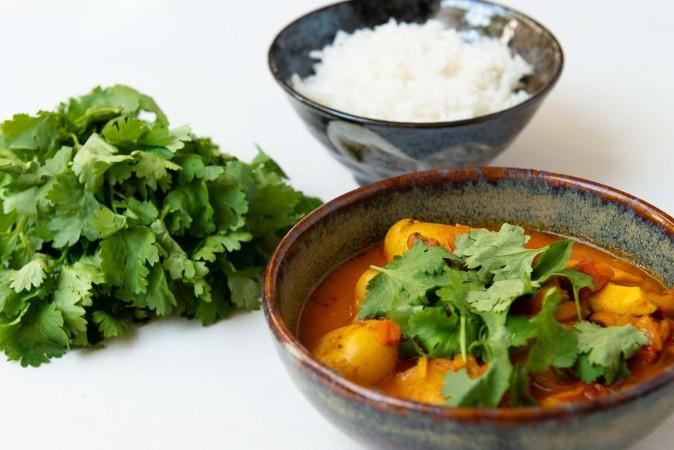Pokhara travel - Nepal, Asia
Pokhara, a bustling city in central Nepal, lies about 200 kilometers (120 miles) west of Kathmandu and serves as the capital of Gandaki Province. Known as the tourism capital of Nepal, Pokhara boasts a population of around 599,504, making it the second most populous city in the country. Nestled in the scenic Pokhara Valley at an elevation of 822 meters (2,700 feet), the city is framed by the majestic Annapurna Mountain Range, home to some of the world's tallest peaks, including Dhaulagiri and Annapurna I.
Population: Estimate 500,000 (as of 2024)
Economy: Tourism is a key driver of Pokhara’s economy, accounting for about 25.4% of the city's financial activities. As the gateway to the Annapurna region, Pokhara attracts trekkers and adventure seekers from around the world, with many trekking routes starting here. The tourism sector provides around 5,000 direct jobs and supports over 1,000 accommodation establishments in the Annapurna Conservation Area. With approximately 400 tourist-standard hotels and a new international airport, Pokhara is well-equipped to serve visitors, particularly in the popular Fewa Lakeside area. Despite these strengths, the city faces challenges such as low hotel occupancy rates and a lack of international hotel brands, leading to price competition among businesses.
Landmarks: Fewa Lake, Devi's Fall, Mahendra Cave, Gupteshwor Cave, Bindabasani Temple, Old Bazaar, Sarangkot, World Peace Pagoda
Nepal

Overview of Pokhara
History & Cultural Influence
Pokhara’s history stretches back centuries, with evidence of human settlement as early as 167 BC. Originally inhabited by ethnic groups like the Gurungs and Magars, the region played a key role as a trade route between India and Tibet, enriching its cultural diversity. In the 17th century, Pokhara was part of the Kingdom of Kaski, one of Nepal’s 24 small kingdoms, with remnants of this era still visible in the hills surrounding the city. Following the unification of Nepal in 1786 under Prithvi Narayan Shah, Pokhara’s significance grew even further.
Culturally, Pokhara is a melting pot of Hindu, Buddhist, and Tibetan influences, reflecting its history as a trade hub and its proximity to Tibet. The city is home to indigenous Gurung and Magar communities, and Tibetan refugee settlements established in the 1950s brought a new wave of cultural influence. In the modern era, Pokhara has transformed into a tourism hotspot, particularly for adventure enthusiasts, serving as the gateway to the Annapurna Circuit and a hub for activities like paragliding and trekking.
Interaction with The Locals
With a warm and friendly interactions with the locals, who are known for their genuine hospitality. The city’s population is ethnically diverse, with groups such as Brahmin-Hill, Gurung, Chhetri, and Magar contributing to its rich cultural tapestry. While Nepali is the most widely spoken language, English is commonly understood in tourist areas, especially by those working in the tourism industry. Locals are often curious about visitors’ cultures and eager to help, making the city feel welcoming to travelers. As tourism is a significant part of the economy, many residents are accustomed to interacting with foreigners and appreciate respectful behavior, especially at religious sites.

Tal Barahi Temple Phewa Lake - © gather
Top attractions in Pokhara
Pokhara is a stunning city in Nepal, renowned for its natural beauty and a variety of attractions that cater to both adventure seekers and those looking to relax. Here’s a guide to the top landmarks, museums, parks, and other popular attractions in Pokhara:
- Phewa Lake: Phewa Lake, the second-largest lake in Nepal, is a serene oasis offering stunning reflections of the Annapurna and Dhaulagiri mountain ranges. Visitors can rent boats or kayaks and glide across the calm waters, or try paddleboarding while enjoying the spectacular views. At the heart of the lake lies the Tal Barahi Temple, a small but significant Hindu temple situated on an island, adding a spiritual charm to the lake's natural beauty. Whether you're seeking tranquility or adventure, Phewa Lake is a must-visit.
- Sarangkot: Sarangkot is one of the best viewpoints in Pokhara, famed for its breathtaking panoramic vistas of the Annapurna mountain range. At sunrise and sunset, the snow-capped peaks are bathed in golden light, creating a mesmerizing spectacle. Sarangkot is also a hub for paragliding, offering thrill-seekers a chance to soar above the valley and enjoy the views from a bird’s eye perspective. It's the perfect spot for nature lovers and adventure enthusiasts alike.
- Devi’s Fall (Patale Chhango): Devi’s Fall is a unique waterfall where the water mysteriously disappears into an underground cave. Known for its power and beauty, the waterfall is surrounded by lush greenery, making it a popular stop for nature lovers. The nearby Gupteshwor Mahadev Cave complements a visit to Devi’s Fall, offering an exciting glimpse into Nepal’s underground wonders.
- World Peace Pagoda: The World Peace Pagoda is a beautiful Buddhist stupa built to symbolize peace and harmony. Perched on a hill overlooking Phewa Lake, the pagoda offers serene surroundings and panoramic views of the Annapurna range and Pokhara Valley. Whether you hike up or take a short drive, the pagoda is a peaceful retreat and a perfect place for reflection and photography.
- Bindhyabasini Temple: One of the oldest temples in Pokhara, Bindhyabasini Temple is dedicated to the goddess Durga and sits atop a hill, offering both spiritual solace and stunning views of the surrounding area. The temple is an important pilgrimage site for locals, especially during festivals, and provides visitors with a glimpse of the rich religious and cultural life of Pokhara.
- Gupteshwor Mahadev Cave: A short walk from Devi’s Fall, the Gupteshwor Mahadev Cave is a revered site dedicated to Lord Shiva. Inside the cave, visitors can see a naturally formed Shiva Lingam (stalagmite) that is worshipped by Hindus. The cave offers a mystical atmosphere and a fascinating experience for those interested in geology and spirituality, making it an easy and rewarding addition to your visit to Devi’s Fall.

Gupteshwor Mahadev Cave - © Q-lieb-in
Must-Try Dishes in Pokhara
Pokhara offers a rich culinary experience, with must-try dishes like momos, delicious Tibetan-style dumplings filled with meat or vegetables and served with spicy achar. Another local favorite is the Thakali set, a traditional meal featuring rice, lentil soup, vegetable curries, and pickles, offering a true taste of Nepali culture. Don't miss the chance to try Sel Roti, a crispy, sweet rice doughnut that's a popular treat during festivals.
- Momos: Momos are a popular snack in Pokhara, often found steaming on street corners or in local eateries. These delicious dumplings are typically filled with minced chicken, buffalo, or vegetables and are served with a spicy dipping sauce called achar. With roots in Tibetan cuisine, momos have become a beloved street food throughout Nepal, drawing both locals and tourists alike for their tasty and comforting flavors.
- Thakali Set: A Thakali set offers a hearty and flavorful dining experience, originating from the Thakali community in the Mustang region. It typically includes rice, lentil soup (dal), vegetable curries, pickles, and sometimes meat. Known for its balance of flavors and variety, this meal is a favorite in Pokhara, giving visitors a chance to savor authentic Nepali food in its most traditional form.
- Dal Bhat: Dal Bhat is the cornerstone of Nepali cuisine, consisting of steamed rice (bhat) and lentil soup (dal) paired with vegetable curries and pickles, and occasionally meat. This dish is a daily staple for most Nepali households, offering a nutritious and filling meal that is enjoyed across the country. Visitors to Pokhara will find Dal Bhat in almost every restaurant, making it a must-try for an authentic taste of local life.
- Sel Roti: Sel Roti is a sweet, ring-shaped rice doughnut that’s crispy on the outside and soft inside. Typically prepared during festivals and special occasions, this snack is a beloved treat among locals in Pokhara. Whether enjoyed with tea or as a standalone snack, Sel Roti’s unique texture and flavor make it a memorable part of Nepali cuisine.
- Gundruk Ko Jhol: Gundruk Ko Jhol is a flavorful dish made from fermented leafy greens (gundruk) cooked in a tangy soup or curry, often accompanied by rice. This traditional dish reflects Nepali agricultural practices, using seasonal vegetables and fermentation to create a hearty meal. Its earthy flavors provide a unique culinary experience for those looking to try something deeply rooted in local traditions.

Aloo Tama - © gather
Festivals & Local Celebrations
Pokhara Street Festival
Time: December 28 to January 1 (annually)
Every year, Pokhara's Lakeside area transforms into a lively hub for the Pokhara Street Festival. For five days, a 3-kilometer stretch of Lakeside is closed to vehicles, allowing visitors to stroll along the streets and enjoy a range of activities. Restaurants serve up both local and international dishes right on the sidewalks, while cultural programs, dance performances, and exhibitions keep the atmosphere vibrant. You can also catch live music, night concerts, and fun events like boat races, waiter races, and tug-of-war competitions, making it a perfect way to welcome the New Year.
Holi Festival (Fagu Purnima)
Time: Usually in March (dates vary based on the lunar calendar)
Holi, the Festival of Colors, is celebrated with incredible energy in Pokhara. During this joyous spring festival, the streets come alive as people throw vibrant colored powders and water at each other, creating a kaleidoscope of color. The Lakeside area is particularly festive, with music and dance performances filling the public spaces. It’s a time of fun, community bonding, and the sharing of sweets and traditional dishes, all while welcoming the arrival of spring.
Rice Plantation Festival
Time: June 29th (15th of Asad in the Nepali calendar)
The Rice Plantation Festival offers a glimpse into Nepal’s rich agricultural heritage. Held during the rice planting season, visitors can take part in planting rice in the muddy fields alongside local farmers. Traditional "Asade" songs fill the air, while festival-goers enjoy beaten rice with curd, a local delicacy. Mud-throwing games and cultural performances add a playful element, giving you a unique hands-on experience of Nepal’s farming traditions.
Fewa Festival
Time: Around Nepali New Year (mid-April)
The Fewa Festival, organized by the Pokhara Hotel Association, is a vibrant celebration that promotes Pokhara as a top tourist destination. Held around the Nepali New Year, the festival features a mix of cultural performances, food festivals with local and international cuisine, and a variety of entertainment programs. Visitors can enjoy activities that highlight Pokhara's natural beauty and its cultural heritage, all set against the stunning backdrop of Fewa Lake.

International Mountain Museum Pokhara - © gather
Weather in Pokhara: Best Time to Visit
Average Temperatures
- Summer (June to August): Average temperatures range from 20°C (68°F) to 32°C (90°F), with July being the hottest month.
- Monsoon Season (June to September): Temperatures remain warm, with increased humidity and frequent rain showers.
- Autumn (September to November): Temperatures start to cool, averaging between 15°C (59°F) and 25°C (77°F).
- Winter (December to February): The coolest months, with average temperatures ranging from 5°C (41°F) to 20°C (68°F). January is typically the coldest month.
- Spring (March to May): Temperatures gradually rise, with averages between 10°C (50°F) and 28°C (82°F).
Best Time to Visit
The best time to visit Pokhara is during the autumn (September to November) and spring (March to May) seasons. During these months, the weather is generally pleasant, with clear skies and mild temperatures, making it ideal for outdoor activities such as trekking, paragliding, and boating on Phewa Lake. The monsoon season (June to August) can bring heavy rainfall, while winter (December to February) can be quite cool, especially in the mornings and evenings.

World Peace Pagoda - © gather
Shopping in Pokhara
Pokhara offers a delightful shopping experience, with various districts and markets where visitors can find local crafts, souvenirs, and unique items. Here are some recommendations for the best shopping areas in the city:
Lakeside Area
The Lakeside area is Pokhara’s most popular shopping district, offering a lively and vibrant atmosphere with a variety of shops, cafes, and restaurants along the lakeshore. It’s a pedestrian-friendly space, perfect for a leisurely stroll as you explore the local boutiques. Whether you’re looking for souvenirs or just enjoying the lakeside vibe, this area has something for everyone.
What to Buy: Pashmina shawls, handicrafts, jewelry, and trekking gear.
Thamel (Pokhara)
Though Thamel is known for its bustling tourist vibe in Kathmandu, it also has a presence in Pokhara. This area is packed with shops catering to trekkers and adventure seekers, offering everything you need for your next expedition. It’s a great spot to pick up outdoor essentials and enjoy a more laid-back version of Kathmandu’s famous shopping district.
What to Buy: Outdoor gear, trekking equipment, and souvenirs.
Asan Tole
Asan Tole is a vibrant local market that offers a taste of everyday life in Pokhara. This bustling market is ideal for those wanting to experience local culture, with stalls overflowing with fresh produce, spices, and traditional snacks. It’s a great spot to find unique culinary souvenirs and immerse yourself in the local lifestyle.
What to Buy: Spices, fresh produce, and local snacks.
Pokhara Handicraft Center
The Pokhara Handicraft Center is a treasure trove of traditional Nepali crafts, where visitors can watch artisans at work and learn about their intricate crafting techniques. It’s an excellent place to find high-quality, handmade items that reflect Nepal’s rich cultural heritage.
What to Buy: Handwoven textiles, pottery, and wood carvings.
Fair Trade Shops
Pokhara is home to several fair trade shops that support local artisans and promote sustainable practices. Shops like Mahaguthi and One Tree Stop not only offer beautifully crafted, ethically sourced items but often feature cozy cafes where you can relax while shopping.
What to Buy: Handicrafts, textiles, and eco-friendly design products.
Rupa Lake and Begnas Lake
For a more tranquil shopping experience, head to Rupa Lake and Begnas Lake. These lesser-known lakes are surrounded by small markets offering local crafts and handmade items. Shopping here provides a peaceful escape from the bustling tourist areas, with the added bonus of stunning natural scenery.
What to Buy: Handmade crafts and local artwork.

Rupa Lake - © gather
Culture Etiquette in Pokhara
When visiting Pokhara, understanding and respecting local customs and cultural etiquette is essential for a positive experience. Here are some important points to keep in mind:
gifts may be seen as inappropriate.
- Greetings and Interactions: When meeting locals, a friendly "Namaste" with palms pressed together is a respectful and common greeting. Elders are treated with extra care and respect, and patience and friendliness are highly valued—displays of anger should be avoided. Public displays of affection between men and women are generally discouraged, so it's best to keep interactions modest.
- Dress Code: Modest dress is important, especially when visiting temples or religious sites. Women should ensure their shoulders and knees are covered. It’s also customary to remove your shoes before entering homes, temples, or other sacred spaces.
- Religious Respect: Always ask permission before taking photos inside temples and walk clockwise around Buddhist stupas and prayer wheels. Non-Hindus may not be allowed into certain parts of Hindu temples, so it's polite to check beforehand. Avoid touching any religious objects or offerings in temples out of respect for local customs.
- Dining Etiquette: Before and after meals, it’s customary to wash your hands. If you’re eating traditionally, use your right hand, as the left is considered unclean. It’s polite to accept food or drink when offered, even if you don’t finish it, though in a private home, finishing your plate is appreciated as a sign of respect.
- General Etiquette: When giving, receiving, or eating, always use your right hand, as the left hand is considered impolite for these activities. Avoid pointing with your finger; instead, use your chin or an open hand. Don’t touch someone’s head—it’s considered sacred—and avoid pointing the soles of your feet at others or religious items.
- Gift Giving: When exchanging gifts, present and receive them with both hands to show respect. Avoid giving leather items, as cows are sacred in Hindu culture, and such gifts may be seen as inappropriate.

Pokhara Street Festival - © gather
Essential Travel Information
Getting Around Pokhara
- Public Buses: Local buses are a budget-friendly option for getting around Pokhara, with fares typically around Rs. 30 per trip. Buses run regularly from Lakeside to key areas like 0 Km, Prithvi Chowk, Hari Chowk, and Damside.
- Taxis: Widely available in tourist hotspots, taxis offer a convenient way to explore the city. Be sure to negotiate the fare before your ride.
- Walking: The Lakeside area is perfect for exploring on foot, with its many shops, cafes, and scenic views easily accessible.
- Scooter Rentals: For those comfortable driving, renting a scooter is a great option. Traffic in Pokhara is generally lighter than in Kathmandu, making it an easier city to navigate.
ATMs and Banking Services
Pokhara offers a reliable network of ATMs and banking services, particularly in the bustling Lakeside area, the main hub for tourists. Major banks like Nepal Investment Bank, Himalayan Bank, Nabil Bank, and Standard Chartered all have ATMs conveniently located throughout the city. Most of these ATMs accept international cards on popular networks such as Visa, Mastercard, Maestro, and Cirrus. The daily withdrawal limits typically range between NPR 10,000 to NPR 30,000 (about USD 100-340), so it's a good idea to plan accordingly. For added security, try to use ATMs located inside bank premises whenever possible.
Accommodation Options
Pokhara offers a range of accommodations to suit all budgets, with Lakeside being the most popular area for tourists. Here, you'll find everything from luxury hotels to cozy guesthouses, with plenty of restaurants and cafes nearby. Whether you're looking for budget-friendly options or a more upscale stay, Lakeside has something for every type of traveler.
Articles for you

Explore Yala National Park - Sri Lanka Travel, Asia
Tucked away in Sri Lanka’s southeastern corner, Yala National Park is where wild nature meets deep tradition. Known worldwide for its leopard population, the park is also home to elephants, sloth bears, crocodiles, and hundreds of bird species. Beyond wildlife, Yala opens doors to a cultural landscape dotted with ancient temples, Buddhist ruins, and coastal villages. For travelers seeking more than just a safari, Yala offers a chance to explore eco-tourism, local communities, and sacred heritage sites.
Population: The Yala National Park area doesn’t have a human population.
Economy: The economy around Yala National Park thrives on a blend of eco-tourism, agriculture, and local services. Safari tours, eco-lodges, and cultural experiences drive steady income for nearby towns like Tissamaharama and Kataragama, supporting thousands of families.
Landmarks: Famous for Block I of Yala and wildlife encounters, including elephants, sloth bears, crocodiles, and exotic bird species.

Explore Galle - Sri Lanka Travel, Asia
Nestled on Sri Lanka’s southern coastline, Galle is a vibrant city where history meets the sea. Its cobbled streets, colonial architecture, and serene beaches make it a must-visit destination for travelers seeking a blend of culture, adventure, and relaxation. A UNESCO World Heritage site, Galle captivates visitors with its Dutch Fort, bustling markets, and friendly locals. Whether you’re exploring the ramparts at sunset or savoring fresh seafood by the shore, Galle promises an unforgettable journey into Sri Lanka’s heritage.
Population: Approximately 113,000 in 2023.
Economy: Galle’s economy thrives on tourism, trade, and fisheries. The city’s historic fort, colonial architecture, and coastal charm draw thousands of international visitors each year, making tourism its main economic driver. Fishing remains vital for local livelihoods, supplying fresh seafood across the region.
Landmarks: Famous for the Galle Fort, Dutch Reformed Church & Maritime Museum, and Unawatuna Beach.

Explore Bentota - Sri Lanka Travel, Asia
Nestled along Sri Lanka’s southwestern coast, Bentota is a tropical paradise that blends golden beaches, vibrant culture, and thrilling adventures. Famous for its calm waters, luxury resorts, and scenic river estuary, Bentota has become a top destination for travelers seeking both relaxation and authentic experiences. From serene beach walks at sunrise to adrenaline-pumping water sports, this coastal town offers a perfect balance of leisure and exploration. With its proximity to Colombo and Galle, Bentota is easy to reach, making it an ideal stop for both short escapes and extended holidays.
Population: Approximately 37,000 in 2023.
Economy: Bentota’s economy thrives mainly on tourism, which drives local businesses such as hotels, restaurants, and wellness retreats. The town also benefits from fishing, coconut cultivation, and handicrafts like wood carving and batik textiles. Many residents rely on the growing demand for water sports and Ayurvedic treatments, making tourism the backbone of both income and employment in the area.
Landmarks: Famous for Bentota Beach, Bentota River Safari, and Kande Vihara Temple.

Explore Mirissa - Sri Lanka Travel, Asia
Mirissa is a charming coastal town on Sri Lanka’s southern shoreline. Known for its golden beaches, turquoise waters, and vibrant marine life, it has become a must-visit stop for travelers exploring the island. Many come for whale watching, surfing, and sunset views at Coconut Tree Hill, but Mirissa offers much more than postcard beauty. The fishing boats you see anchored by the bay carry generations of stories. Local traditions, delicious cuisine, and a laid-back rhythm of life shape every visitor’s experience.
Population: Approximately 4,700 in 2023.
Economy: Mirissa’s economy is largely shaped by its coastal location. Fishing has long been the backbone of local livelihoods, with generations relying on the Indian Ocean for income. In recent decades, tourism has become the main driver of growth, thanks to whale watching, surfing, and beachside hospitality.
Landmarks: Famous for Mirissa Beach, Coconut Tree Hill, and Parrot Rock Bridge.

Explore Nuwara Eliya - Sri Lanka Travel, Asia
Tucked away in the Central Highlands of Sri Lanka, Nuwara Eliya is often called “Little England”. With its rolling tea plantations, cool misty mornings, and colonial charm, this mountain town feels like a step into another world. Travelers come here to breathe fresh air, walk through flower gardens, sip the finest Ceylon Tea, and enjoy a pace of life far from the island’s busy cities. Whether you’re drawn by scenic landscapes, heritage architecture, or the warmth of its people, Nuwara Eliya is a destination that blends nature, culture, and history in perfect harmony.
Population: Approximately 781,000 in 2023.
Economy: Nuwara Eliya’s economy thrives mainly on tea production, as it sits in the heart of Sri Lanka’s central highlands, famous worldwide for Ceylon Tea. The city also benefits from a growing tourism industry, attracting visitors with its colonial charm, cool climate, and scenic landscapes.
Landmarks: Famous for Gregory Lake, Hakgala Botanical Garden, and Victoria Park.

Explore Sukau - Malaysia Travel, Asia
Nestled on the banks of the Kinabatangan River in Sabah, Malaysian Borneo, Sukau is a destination where wildlife, culture, and conservation come together. Known as one of Asia’s top spots for river safaris and eco-tourism, this quiet village offers a front-row seat to encounters with Bornean orangutans, pygmy elephants, proboscis monkeys, and exotic birdlife.
Population: Approximately 1,400 in 2019.
Economy: Sukau’s economy is shaped by its riverine location and natural resources. Traditionally, the Orang Sungai community relied on fishing, small-scale farming, and forest gathering for their livelihood. Today, the village has shifted toward eco-tourism, with river cruises, jungle trekking, and homestays providing income.
Landmarks: Famous for the Kinabatangan River cruises, Gomantong Caves, and Ox-bow lakes and wetlands.
